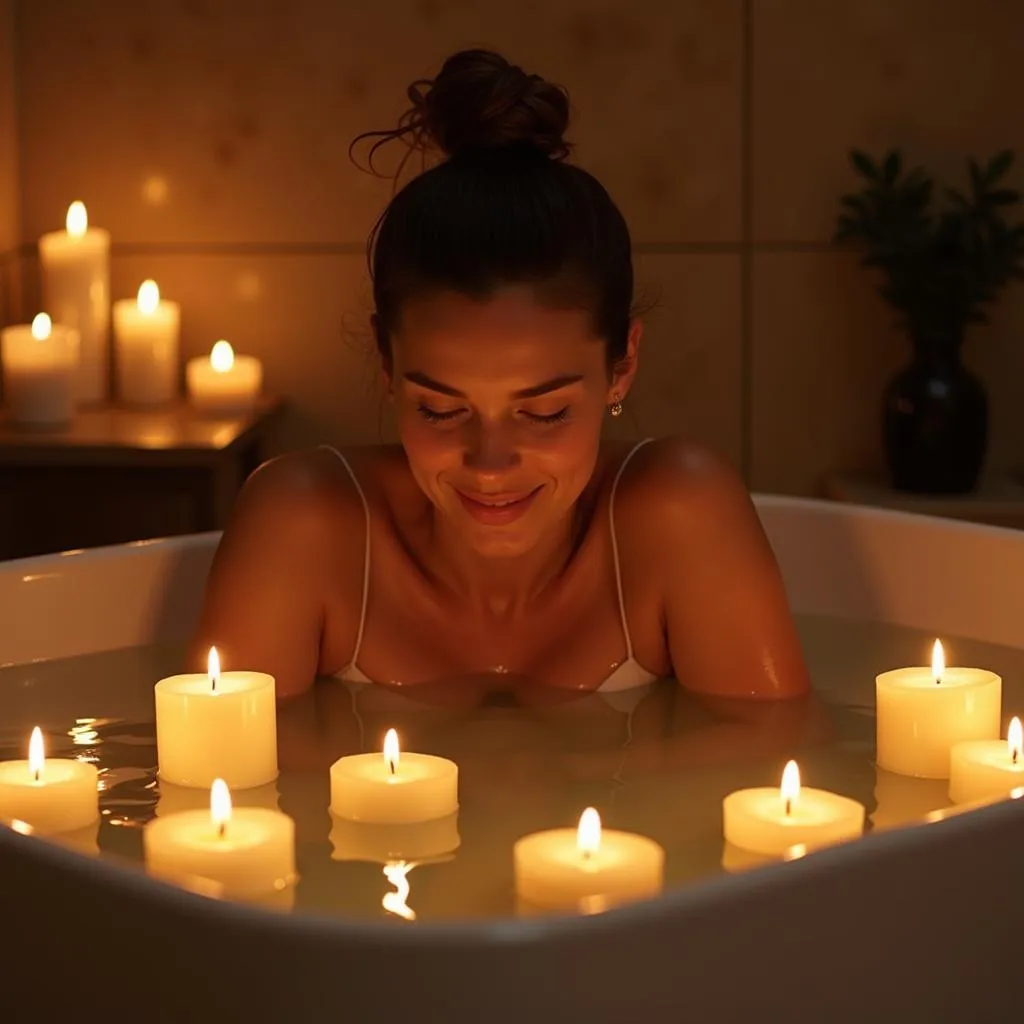Ayurvedic spa treatments are more than just a luxurious indulgence—they’re a holistic approach to well-being, designed to harmonize your mind, body, and spirit. While visiting a spa offers a truly immersive experience, you can recreate the magic of Ayurveda in the comfort of your own home. Let’s explore the world of at-home Ayurvedic spa treatments, empowering you to prioritize self-care and embrace the healing power of this ancient practice.
Understanding the Principles of Ayurveda
Before diving into DIY spa treatments, it’s helpful to grasp the core principles of Ayurveda. This ancient Indian system of medicine emphasizes balance and harmony within your unique constitution, or “dosha.” There are three primary doshas:
- Vata: Characterized by air and ether, Vata governs movement, creativity, and communication.
- Pitta: Associated with fire and water, Pitta regulates metabolism, transformation, and intelligence.
- Kapha: Comprised of earth and water, Kapha promotes stability, structure, and lubrication.
By understanding your dominant dosha, you can choose Ayurvedic practices and treatments that help balance your energies and enhance your overall well-being.
Creating a Serene Spa Atmosphere at Home
Transforming your home into a tranquil oasis is key to enjoying your Ayurvedic spa experience. Here’s how to set the mood:
- Minimize distractions: Turn off electronics, dim the lights, and inform your household of your need for quiet time.
- Engage your senses: Light candles with calming scents like lavender or sandalwood. Play gentle, meditative music.
- Prepare a warm space: Ayurveda emphasizes warmth, so ensure your bathroom or chosen space is comfortably warm.
Nourishing Ayurvedic Spa Treatments to Try at Home
Ready to indulge in some self-care? Here are some popular Ayurvedic spa treatments you can easily do yourself:
1. Abhyanga: The Art of Ayurvedic Self-Massage
Abhyanga, or Ayurvedic oil massage, is a cornerstone of Ayurvedic self-care. It involves gently massaging warm oil into your skin, promoting circulation, relaxation, and detoxification.
How to Perform Abhyanga:
- Choose your oil: Sesame oil is warming and grounding, making it ideal for Vata types. Coconut oil is cooling and soothing for Pitta, while almond oil is nourishing for Kapha.
- Warm the oil: Gently heat the oil on the stovetop or in a bowl of hot water. Test the temperature on your wrist before applying.
- Find a comfortable position: Sit or stand on a towel to protect your floor from oil spills.
- Start with your scalp: Massage oil into your scalp using circular motions, working your way down your body.
- Use long strokes on your limbs: Massage towards your heart to encourage lymphatic drainage.
- Use circular motions on joints: Spend extra time on areas like your elbows, knees, and ankles.
- Relax and absorb: After massaging your entire body, rest for 10-15 minutes to allow the oil to penetrate your skin.
- Follow with a warm shower or bath: Use a gentle cleanser if needed.
2. Shirodhara: A Soothing Scalp Treatment
Shirodhara is a deeply restorative Ayurvedic therapy that involves gently pouring a continuous stream of warm oil onto the forehead, specifically the “third eye” area. While a traditional Shirodhara treatment is best experienced with a trained practitioner, you can enjoy a simplified version at home.
How to Perform a Simplified Shirodhara at Home:
- Choose your oil: Sesame or coconut oil work well.
- Warm the oil: Gently heat the oil.
- Position yourself: Sit comfortably with your back supported.
- Create a steady stream: You can use a small pot with a spout, a special Shirodhara vessel, or even a plastic bag with a small hole in the corner.
- Pour the oil: Aim the stream of oil onto your forehead, focusing on the area between your eyebrows.
- Continue for 5-15 minutes: Close your eyes and allow yourself to relax.
- Gently massage the oil into your scalp: Wrap your head in a warm towel and rest for another 10-15 minutes.
- Wash your hair as usual.
3. Garshana: Dry Brushing for Exfoliation and Circulation
Garshana is an invigorating Ayurvedic dry brushing technique that helps remove dead skin cells, improve circulation, and stimulate the lymphatic system.
How to Perform Garshana:
- Choose a natural bristle brush: Look for a brush with a long handle for reaching your back.
- Dry brush before showering: Your skin should be dry and free of lotions or oils.
- Start with your feet: Use long, sweeping strokes towards your heart, moving upwards from your feet to your legs.
- Brush your arms and torso: Continue using upward strokes towards your armpits and heart.
- Use circular motions on your abdomen: Brush your stomach in a clockwise direction.
- Be gentle: Avoid brushing too harshly, especially on sensitive areas.
- Shower after brushing: Rinse off any dead skin cells.
- Moisturize as usual.
Conclusion
Integrating Ayurvedic spa treatments into your self-care routine can profoundly impact your overall well-being. By embracing the principles of Ayurveda and incorporating these simple practices, you can cultivate balance, reduce stress, and enhance your natural radiance.
Remember, self-care is not a luxury—it’s a necessity. Take time for yourself, indulge in these Ayurvedic rituals, and experience the transformative power of ancient wisdom in your own home.
Frequently Asked Questions
1. How often should I practice Abhyanga?
Daily Abhyanga is ideal, but even a few times a week can be beneficial.
2. Can I do Garshana if I have sensitive skin?
Yes, but use a softer brush and lighter pressure. If you have any skin conditions, consult with a healthcare professional before trying Garshana.
3. What are the benefits of Shirodhara?
Shirodhara is known to reduce stress, improve sleep quality, and promote mental clarity.
4. Can I use any oil for Ayurvedic treatments?
While sesame, coconut, and almond oils are commonly used, it’s best to choose oils that suit your dosha and skin type.
5. Do I need any special equipment for these treatments?
No, you can perform these treatments with simple household items.
